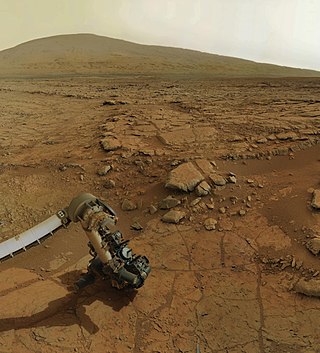
Astrobiology is a scientific field within the life and environmental sciences that studies the origins, early evolution, distribution, and future of life in the universe by investigating its deterministic conditions and contingent events. As a discipline, astrobiology is founded on the premise that life may exist beyond Earth.

Life is a quality that distinguishes matter that has biological processes, such as signaling and self-sustaining processes, from matter that does not. It is defined descriptively by the capacity for homeostasis, organisation, metabolism, growth, adaptation, response to stimuli, and reproduction. All life over time eventually reaches a state of death, and none is immortal. Many philosophical definitions of living systems have been proposed, such as self-organizing systems. Viruses in particular make definition difficult as they replicate only in host cells. Life exists all over the Earth in air, water, and soil, with many ecosystems forming the biosphere. Some of these are harsh environments occupied only by extremophiles.

Panspermia is the hypothesis that life exists throughout the Universe, distributed by space dust, meteoroids, asteroids, comets, and planetoids, as well as by spacecraft carrying unintended contamination by microorganisms, known as directed panspermia. The theory argues that life did not originate on Earth, but instead evolved somewhere else and seeded life as we know it.
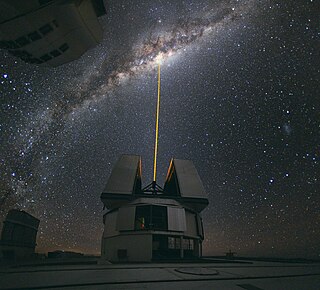
Astronomy is a natural science that studies celestial objects and the phenomena that occur in the cosmos. It uses mathematics, physics, and chemistry in order to explain their origin and their overall evolution. Objects of interest include planets, moons, stars, nebulae, galaxies, meteoroids, asteroids, and comets. Relevant phenomena include supernova explosions, gamma ray bursts, quasars, blazars, pulsars, and cosmic microwave background radiation. More generally, astronomy studies everything that originates beyond Earth's atmosphere. Cosmology is a branch of astronomy that studies the universe as a whole.
Christopher Isham, usually cited as Chris J. Isham, is a theoretical physicist at Imperial College London.

Biogeochemistry is the scientific discipline that involves the study of the chemical, physical, geological, and biological processes and reactions that govern the composition of the natural environment. In particular, biogeochemistry is the study of biogeochemical cycles, the cycles of chemical elements such as carbon and nitrogen, and their interactions with and incorporation into living things transported through earth scale biological systems in space and time. The field focuses on chemical cycles which are either driven by or influence biological activity. Particular emphasis is placed on the study of carbon, nitrogen, oxygen, sulfur, iron, and phosphorus cycles. Biogeochemistry is a systems science closely related to systems ecology.
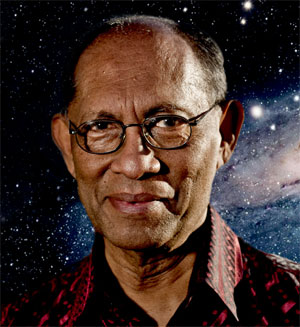
Nalin Chandra Wickramasinghe is a Sri Lankan-born British mathematician, astronomer and astrobiologist of Sinhalese ethnicity. His research interests include the interstellar medium, infrared astronomy, light scattering theory, applications of solid-state physics to astronomy, the early Solar System, comets, astrochemistry, the origin of life and astrobiology. A student and collaborator of Fred Hoyle, the pair worked jointly for over 40 years as influential proponents of panspermia. In 1974 they proposed the hypothesis that some dust in interstellar space was largely organic, later proven to be correct.
Edgar Zilsel was an Austrian-American historian and philosopher of science.
John Scales Avery was an American theoretical chemist noted for his research publications in quantum chemistry, thermodynamics, evolution, and history of science. Since the early 1990s, Avery had been an active world peace activist. During these years, he was part of a group associated with the Pugwash Conferences on Science and World Affairs. In 1995, this group received the Nobel Peace Prize for their efforts. He was an Associate Professor in quantum chemistry at the University of Copenhagen. His 2003 book Information Theory and Evolution set forth the view that the phenomenon of life, including its origin and evolution, including human cultural evolution, has its background situated over thermodynamics, statistical mechanics, and information theory. Avery died on January 4, 2024, at the age of 90.
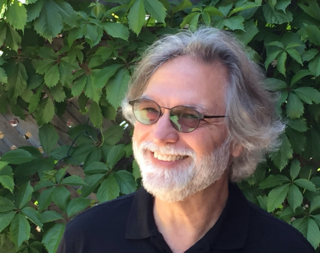
Jan Anthony Sapp is a professor in the Department of Biology, York University, Canada. His writings focus especially on evolutionary biology beyond the classical neo-Darwinian framework, and emphasize the fundamental importance of symbiosis and horizontal gene transfer in heredity and evolution.
A protocell is a self-organized, endogenously ordered, spherical collection of lipids proposed as a rudimentary precursor to cells during the origin of life. A central question in evolution is how simple protocells first arose and how their progeny could diversify, thus enabling the accumulation of novel biological emergences over time. Although a functional protocell has not yet been achieved in a laboratory setting, the goal to understand the process appears well within reach.
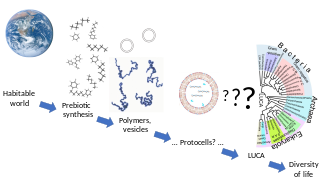
Abiogenesis is the natural process by which life arises from non-living matter, such as simple organic compounds. The prevailing scientific hypothesis is that the transition from non-living to living entities on Earth was not a single event, but a process of increasing complexity involving the formation of a habitable planet, the prebiotic synthesis of organic molecules, molecular self-replication, self-assembly, autocatalysis, and the emergence of cell membranes. The transition from non-life to life has never been observed experimentally, but many proposals have been made for different stages of the process.
A sulphobe is a film composed of formaldehyde and thiocyanates alleged to have lifelike properties. The name is a portmanteau of sulphur microbe. Sulphobes were a subject in the researches of Alfonso L. Herrera, a biologist who studied the origin of life.

Apophlaea is a genus of thalloid algae that is endemic to New Zealand. Species in the genus are found in the high intertidal zone on New Zealand's coasts. Specimens can reach around 15 cm in size. The thalli take a crustose form, but also contain upright, branching frond-like protrusions that reach 5–8 cm in height. Secondary pit connections and secondary pit connectionsare present in the organisms. Apophlaea reproduces by means of conceptacles; it produces tetraspores.
Prochloron is a genus of unicellular oxygenic photosynthetic prokaryotes commonly found as an extracellular symbiont on coral reefs, particularly in didemnid ascidians. Part of the phylum cyanobacteria, it was theorized that Prochloron is a predecessor of the photosynthetic components, chloroplasts, found in photosynthetic eukaryotic cells. However this theory is largely refuted by phylogenetic studies which indicate Prochloron is not on the same line of descent that lead to chloroplast-containing algae and land plants.
James William Schopf is an American paleobiologist and professor of earth sciences at the University of California Los Angeles. He is also Director of the Center for the Study of Evolution and the Origin of Life, and a member of the Department of Earth and Space Sciences, the Institute of Geophysics and Planetary Physics, and the Molecular Biology Institute at UCLA. He is most well known for his study of Precambrian prokaryotic life in Australia's Apex chert. Schopf has published extensively in the peer reviewed literature about the origins of life on Earth. He is the first to discover Precambrian microfossils in stromatolitic sediments of Australia (1965), South Africa (1966), Russia (1977), India (1978), and China (1984). He served as NASA's principal investigator of lunar samples during 1969–1974.
Natrinema versiforme is an extremely halophilic archaeon. It is neutrophilic, non-motile and pleomorphic, with type strain XF10T.
Halococcus dombrowskii is an archaeon first isolated from a Permian alpine salt deposit. It is an extremely halophilic coccoid with type strain H4T.
Jiri Jonas is a professor emeritus of chemistry in the Center for Advanced Study at the University of Illinois at Urbana-Champaign. Jiri Jonas is considered a pioneer in the use of magnetic resonance imaging at high pressure, developing techniques to study the dynamic structure of liquids and proteins. This approach has been used in the study of the arc repressor, a DNA-binding protein containing 53 amino acid residues.

Peter Louis Antonelli was an American mathematician known for his work on mathematical biology, Finsler geometry, and their connections.










